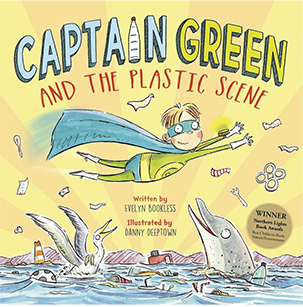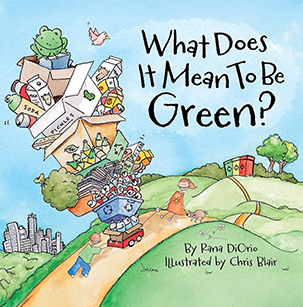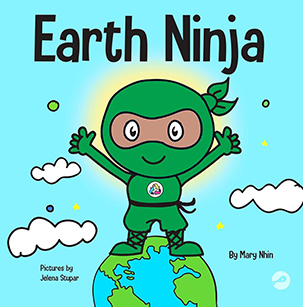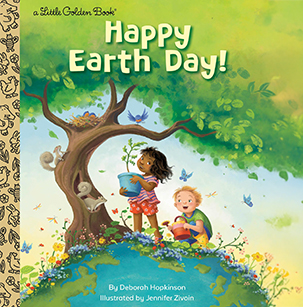Announcing our Earth Day Coloring Contest Winners!
By keeping the environment clean & green through proper waste management, you too can do your part for the planet!
WE’VE GOT THE WHOLE WORLD IN OUR HANDS!
Let's Celebrate Earth Day!
Support our pollinators - Clean up plastic in your neighborhood or park - Swap out your kitchen and household products - Stop pesticides and chemicals in the garden - Let’s work together to make our planet healthier! Below are some ideas of ways you can make this Earth Day a green one.
Did you know?
According to The Old Farmer’s Almanac, "the first Earth Day was held on April 22, 1970, when San Francisco activist John McConnell and Wisconsin Senator Gaylord Nelson separately asked Americans to join in a grassroots demonstration. Dealing with dangerously serious issues concerning toxic drinking water, air pollution, and the effects of pesticides, an impressive 20 million Americans—10% of the population—ventured outdoors and protested together."
Supplies:
- Large plastic bottle cut into two cylinders
- String for hanging
- Sticks and twigs
- Pine cones
- Bark
- Pieces of moss
- anything else you can find – bamboo with it’s holes, make natural straws, which are great hidey hole for insects and bugs! Basically any natural materials are great!
Directions:
- Cut the bottle down to size
- Arrange your materials by size and texture
- Decide on the insect hotel location and add string for hanging
- Make sure your hotel is stuffed nice and cozy so nothing falls out!
Credit: Red Ted Art

Supplies:
- 2 cups all-purpose bleached flour
- 1 cup of salt
- 1 cup of warm water
- Round cookie cutter or a drinking cup/glass
- Toothpick, butter knife, or fork
- Drinking straw
- String
- Blue and green paint
Directions:
- Mix the flour and salt together in a bowl, then form a well in the center.
- Add the warm water and mix together until it forms a dough. If the dough looks a little runny, allow the mixture to rest for a minute or two first instead of adding more flour! This will give the salt a chance to absorb the extra moisture.
- Roll the dough to ¼ inch thick or so and cut out large circle shapes for your earth.
- Use a toothpick, butter knife or a fork to make outlines on the circle for land and ocean.
- Use a straw to make a hole in the top of each ornament. Place on a tray and leave for 24 to 48 hours to air dry.
- Once dry, paint your salt dough Earth.
- Finish up by threading a piece of string through the hole in the ornament. Now you have a cute salt dough Earth to hang up or wear as a necklace.
Credit: Little Bins for Little Hands
Ingredients:
- 12 cups popped white popcorn
- ⅓ cup butter
- ½ cup light corn syrup
- 1 cup sugar
- 1 package of Kool-Aid (blue OR green)
- ½ tsp baking soda
Directions:
- Preheat oven to 225 degrees.
- Place butter in a pot over medium-low heat. Add corn syrup and sugar and stir until butter is melted.
- Bring mixture to a low boil. Reduce heat and continue to simmer. Stir continually for 3 minutes.
- Remove pot from stove and stir in Kool-Aid and baking soda.
- Add a few drops of food coloring if needed. Mix well and pour over popcorn. Stir until popcorn is evenly coated.
- Spread popcorn onto a baking sheet and cook at 225 degrees for 40 minutes. Stir every 10 minutes.
- Cool completely and then break into pieces.
Credit: Simple As That Blog
Check out your local library, or trade books with a friend! Here are some ideas:

Captain Green and the Plastic Scene
by Evelyn Bookless

What Does It Mean to be Green
by Rana DiOrio

Where Does the Garbage Go?
by Paul Showers

Peep Inside the Garden
by Anna Melbournee

Earth Ninja: A Children’s Book About Recycling, Reducing and Reusing
by Mary Nhin

Happy Earth Day! (Little Golden Book)
by Deborah Hopkinson
Check local websites for a list of trails in your area. Use search words like "hiking trails or city/county parks near me"
Grab a trash bag and some gloves and take a walk around your neighborhood and beautify your local roads
Use key words like "Bike paths near me" to search for areas to explore by two wheels
Check out
this link for more information on how to compost at home
The link will take you to a site with more than 20 ideas of bird feeders you can make with items you likely already have at home!
What Are Pollinators? Birds, bats, butterflies, moths, flies, beetles, wasps, small mammals, and most importantly, bees are pollinators. They visit flowers to drink nectar or feed off pollen and transport pollen grains as they move from spot to spot.
Why Is Habitat Creation For Pollinators Important? Improved pollinator habitats can increase the presence of native pollinators on working vegetable, fruit, and grain farmland. This can improve farm viability and climate change resilience. Climate change is causing more frequent and erratic weather extremes, such as drought and intense rain events.
Here is a list of ideas for ways you can practice conservation from
howstuffworks:
Conserve Water
Be Car-conscious
Walk, Bike or take Public Transit
Reduce, Reuse, Recycle
Switch to LEDs
Live Energy Wise
Eat Sustainable Foods
Plant a Tree
Give Up Plastics